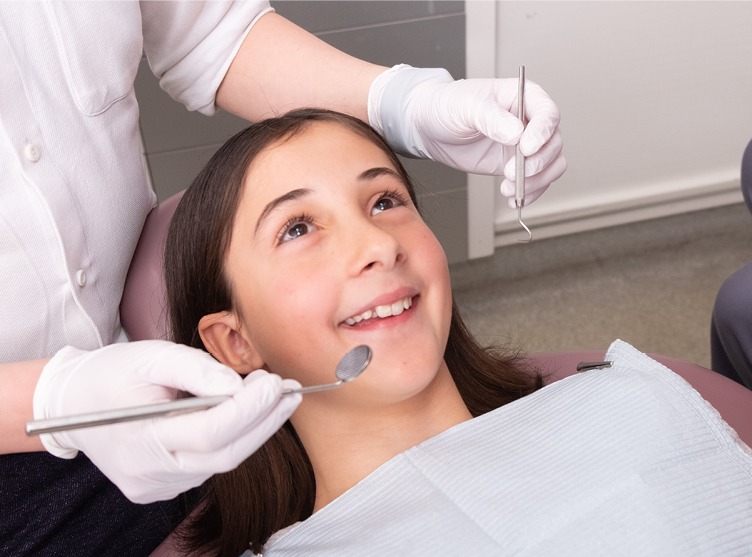The Basic Principles Of Legacy Orthodontics
The Basic Principles Of Legacy Orthodontics
Blog Article
Some Of Legacy Orthodontics
Table of ContentsThe Best Guide To Legacy OrthodonticsSome Ideas on Legacy Orthodontics You Need To KnowLegacy Orthodontics for Beginners10 Easy Facts About Legacy Orthodontics Described10 Easy Facts About Legacy Orthodontics Explained
In addition, we offer flexible therapy routines, versatile settlement alternatives and a fun, pleasurable experience.An orthodontist is a dental expert trained to detect, protect against, and treat teeth and jaw irregularities. They fix existing conditions and are educated to determine problems that may establish in the future. Orthodontists collaborate with individuals of any ages, from kids to grownups. Individuals usually associate an excellent smile with health.
Malocclusion, or misaligned teeth, can bring about dental problems, consisting of tooth degeneration, periodontal disease, and hard or agonizing eating. Not everybody is birthed with straight teeth. If you have a poor bite or large rooms in between your teeth, you might intend to seek advice from a dental professional focusing on orthodontic treatment.
Not known Factual Statements About Legacy Orthodontics
( Image Credit: DigitalVision/Getty Images) Orthodontists use dealt with and removable dental gadgets, like braces, retainers, and bands, to transform the placement of teeth in your mouth. Orthodontic therapy is for oral problems, including: Uneven teethBite issues, like an overbite or an underbiteCrowded teeth or teeth that are as well far apartJaw misalignmentThe goal of orthodontic therapy is to enhance your bite.
While you might believe of orthodontists as generally for kids or teens that need braces, they can correct dental troubles at any type of age. Orthodontists participate in university, dental school, and orthodontic school.
, but not all dentists are orthodontists. They concentrate on two areas: Just how to properly and safely relocate teeth Just how to effectively guide development in the teeth, jaw, and faceOnce an orthodontist has finished training, they have the choice to come to be board certified.
Some Known Facts About Legacy Orthodontics.
Misalignment, or malocclusion, is the most common factor individuals see an orthodontist. It is genetic and is the result of size distinctions between the top and reduced jaw or in between the jaw and teeth. Malocclusion causes tooth overcrowding, a twisted jaw, or uneven bite patterns. Malocclusion is normally treated with: Your orthodontist connects metal, ceramic, or plastic square bonds to your teeth.
Some individuals require a headgear to help move teeth into line with stress from outside the mouth. A retainer is a custom-made tool that keeps your teeth in location.
They can produce added area in the mouth without having to draw teeth. Orthodontists make use of cords, medical screws, or plates to sustain your jaw bone.
You may need to see an orthodontist if you have: Crowding or otherwise enough room for every one of your teethOverbite, when your upper teeth come by your bottom teethUnderbite, when your base teeth are as well far forwardSpacing or concerns with gapsCrossbite, which is when your upper teeth fit behind your base teeth when your mouth is closedOpen bite or a vertical space between your front base and top teethMisplaced midline, when the facility of your bottom and upper teeth do not align Dealing with a dental malocclusion can: Make biting, eating, and speaking easierImprove the proportion of our face and your general appearanceEase pain from temporomandibular joint problemsSeparate your teeth and make them easier to clean up, helping avoid tooth decay or tooth cavities It's usually a dental practitioner who initially notifications misaligned teeth throughout a routine test.
The Ultimate Guide To Legacy Orthodontics

During your very first orthodontic examination, you'll likely have: A dental examPhotos taken of your face and smileDental X-raysPanoramic (360 level) X-rays of your face and headImpressions to develop molds of your teethThese tests will help your orthodontist know how to wage your treatment. orthodontics. An orthodontist is a dentist that's had training to treat your teeth and jaw
Orthodontists may carry out surgical treatment, exams,X-rays,and even more to assist you obtain a much more comfortable, much healthier smile. An orthodontist is concentrated on your bite, so something like a broken tooth would be handled by a dental professional. Orthodontists are dental professionals however not all dental experts are orthodontists. Orthodontists are focused on your bite, or the way your teeth fit with each other, and the straightness of your teeth.
Ever before wondered exactly how celebrities constantly seem to have perfectly aligned teeth? Orthodontists are oral professionals who focus on fixing abnormalities in the teeth and jaws.
Excitement About Legacy Orthodontics

, orthodontists have a diverse toolkit at their disposal. These tried-and-true dental braces use a system of brackets adhered to the teeth and connected by cords.
Clear aligners, like Invisalign, are a popular option for patients looking for a much more discreet treatment option. These detachable trays are custom-made site to gradually shift the teeth's placement. Headwear may be utilized along with dental braces or aligners to use added targeted pressures, particularly for dealing with jaw discrepancies. In instances of narrow jaws, palatal expanders can be utilized to produce space for proper tooth placement.
Report this page